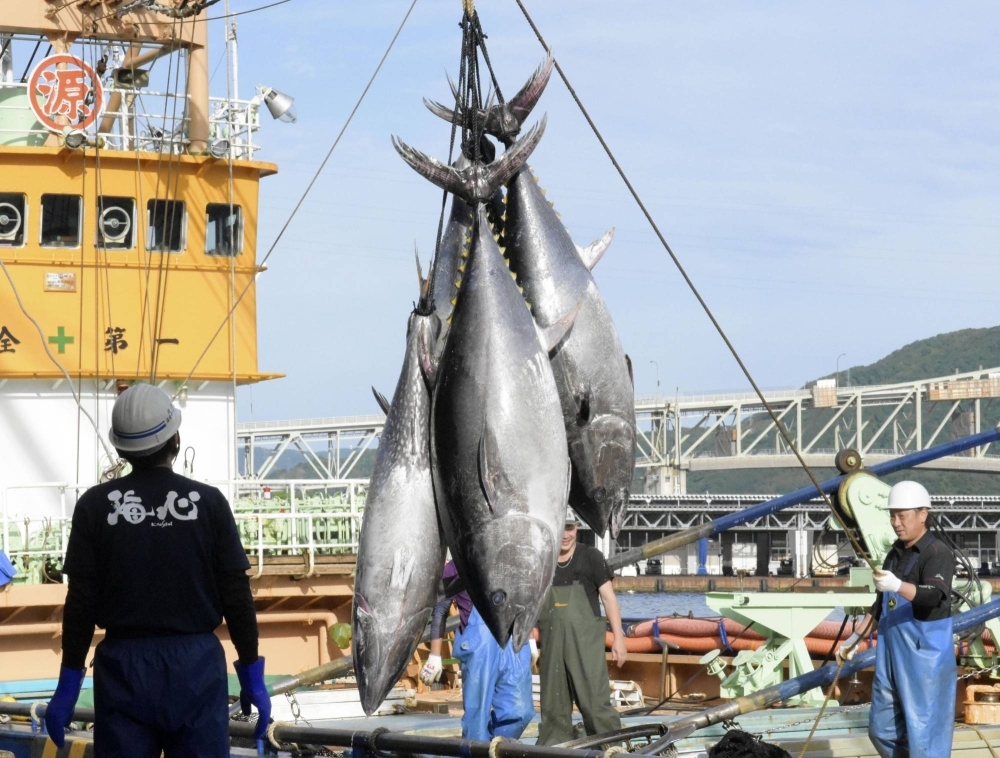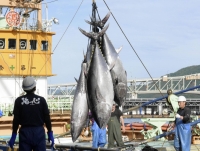The Fisheries Agency is planning to expand reporting obligations on catches of Pacific bluefin tuna, as it seeks to prevent illegal catches of the fish prized in sushi, sashimi and other cuisine.
Under the plan, fishery operators will have to report to local governments not only the total weight of Pacific bluefin tuna that they have caught, but also the number of such tuna caught, agency officials said.
The agency aims to have a bill to implement the change enacted next year. It is considering introducing penalties on noncompliant fishery operators.
The move comes in response to the revelations in 2021 that some catches of famous Oma-branded bluefin tuna caught off the northeastern Japan prefecture of Aomori had been unreported.
Under the agency's plan, fishery operators will also be required to provide buyers with detailed information on every single bluefin tuna weighing at least 30 kilograms that they have caught, including the name of the fishing vessel, the fish's weight and when the fish was unloaded at a port from the vessel.
The requirement is designed to allow fishery distributors and processors to confirm that the bluefin tuna they handle have not been illegally caught.
The agency plans to have fishery operators use transaction slips, quick response (QR) codes and other means to relay such information to buyers.
The amount of Pacific bluefin tuna that can be caught is regulated under international agreements aimed at restoring resources of the fish that had been declining until 2010.
The agency will also beef up its monitoring of Pacific bluefin tuna catches.
The government's supplementary budget plan includes ¥54 million in spending to introduce equipment to monitor the unloading of bluefin tuna at ports.
The agency is also considering setting up a new post to inspect unloading operations in fiscal 2024, which starts next April.




